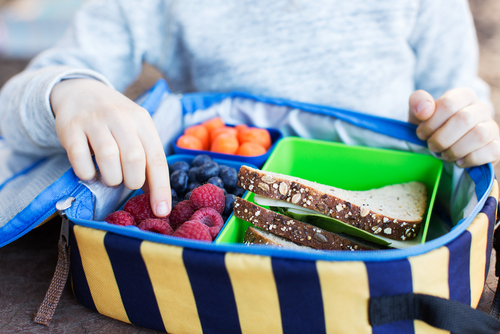I have two daughters who are typical broke and starving university students, living off the bare minimum of a student loan while working part time jobs at minimum wage.
They are healthy young adults, despite their less than perfect nutrition habits. I told them that now is the time to start bettering their eating habits. They may be healthy and feel great now but once they hit 40 they are going to be wishing they had started on the path to better nutrition much earlier in life.
It’s not that they don’t want to, but they really can’t afford to.
A Student’s Lament
I was going to start into the how to save money when shopping for food, such as fruits and vegetables really aren’t expensive, when I was hit with the harsh reality of the poorer population.
When you are poor, fresh fruits and vegetables are luxury items. It’s not the dollars, but the environment of a low income household. Students that require a special diet get double whammied. Gluten Free bread can run as much as $16 a loaf, compared to store brand white bread at $1.99 and dairy milk substitutes can be up to twice as much as dairy milk. Many students let their health suffer over costs.
As low income people, they are restricted by such things as transportation to a grocery store, location to the nearest store which may be just a convenience store with limited selection and higher prices. The funds to buy groceries when they need them, or there is a sale, isn’t always readily available, as paycheck does not always meet paycheck.
Buying in bulk or quantities is also often restricted due to poorer quality refrigerators and small or no freezer space. Small apartments or dorm rooms with little or no pantry space and the amount they are able to carry home on a bus is also a hindrance. Buying in bulk overall might be cheaper, but the initial investment of buying in bulk isn’t always possible on a limited budget. Teaming up with a friend to buy in bulk may not be feasible if only one of you currently has the cash flow to hit up Costco, which also requires a paid for membership.
Convenience foods are a students go to food. Boxed mac and cheese, instant noodles, canned soup and frozen meals line the pantries of students everywhere. To make these meals “From Scratch” would prove a healthier option, however the initial investment on pantry staples, not to mention the need for proper kitchen tools, can cut into quality study time and a limited budget very quickly.
Sadly, the low income life takes a toll on healthcare as well, as many of these young people will incur chronic health issues over the years simply due to poor nutrition and through no fault of their own. And many end up staying with the poor eating habits. Healthy food feeds a healthy mind and our post secondary students shouldn’t have to suffer.
So how can we help out low income students to get better food? Every little bit can help and encourage all of us to take the time to think before judging the students that choose to eat a fast food meal because that is what they can afford.
- If your city or town has any kind of post secondary education, check to see if they have their own food bank just for students. Offer to start one if they don’t. The local university here has one just for students but they are restricted to the number of times they can access it. This may be due to limited donations. I myself, was not aware that it existed. Perhaps they need volunteers to collect and distribute donations.
- Donate produce from your garden to the college food bank.
- Check with local post secondary schools, or churches to see if you can “adopt” a student (or even a low income family). Invite them for a meal once a week, or make one to take to them.
- Hire a student to do odd jobs around your house, and give them a bonus with a grocery gift card or small food hamper. Many will simply “work for food.”
- Is your babysitter, favorite barista, grocery cashier, or pizza delivery driver a student?? Grocery gift cards make an excellent tip or holiday gift.
- Check with your local university, churches or community organization to see what programs are available to support young people in need. Perhaps you can drive them to the store, make them a meal, or collect food donations for their food bank.
- Get together with one of your own clubs or organizations to make hampers of food to distribute to post secondary students especially at exam time when funds start running low and stresses run high.
Ideally, it would be better as a whole, to look for ways to lower prices and make healthier food accessible to all, but that will take time and the efforts of many. In the mean time, if we can open our minds and hearts to our younger generations now, perhaps we can build a healthier future. You may be the one feeding the mind and soul of those who create a better world for generations to come.


